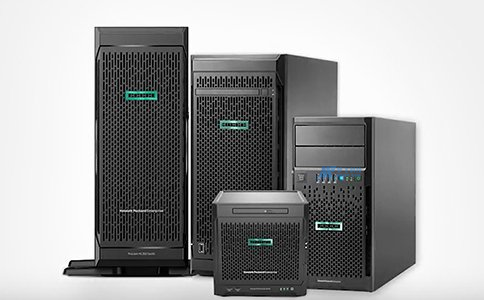In the digital age, many businesses and individuals choose to rent servers to host their websites or applications. While renting servers offers convenience and cost savings, data security concerns should not be overlooked. How can you ensure data security while renting a server and avoid the risks posed by security vulnerabilities? Today, we will explore how to secure your data when renting a server from several perspectives.

1. Choose a Reputable Server Provider
The first step to ensuring data security when renting a server is choosing a reputable provider. Well-known providers typically offer stricter security measures, such as firewalls, DDoS protection, and data encryption. These security features can effectively prevent external attacks and data breaches.
Additionally, some server providers offer monitoring services that can track the server’s status in real-time, detecting abnormalities and preventing potential threats from going unnoticed for extended periods. Therefore, when choosing a server provider, make sure to review their security policies, understand the services they offer, and ensure they meet your data security requirements.
2. Strengthen Server Access Control
One of the key aspects of server security is access control. Ensure that only authorized users can access the server to prevent unauthorized personnel or hackers from intruding. Start by setting complex passwords for administrative accounts to avoid easy account breaches due to weak passwords. To further enhance security, it is recommended to enable two-factor authentication (2FA), so that even if the password is compromised, hackers cannot easily log in.
Additionally, controlling access permissions is crucial. You can set different permissions based on roles, ensuring that each user can only access data and files relevant to their responsibilities, preventing unnecessary data exposure. By reviewing access logs and regularly checking login records, you can detect suspicious login activities and take action to prevent potential threats.
3. Data Encryption and Backup
Whether for data storage or transmission, data encryption is an essential method for ensuring data security. When storing data, use encryption technology to protect sensitive information. This ensures that even if data is accessed without authorization, it cannot be read. For data transmission, always use encrypted protocols like SSL/TLS to protect the security of data while in transit.
In addition to encryption, data backup is crucial to prevent data loss. Regularly back up important data on the server, especially critical application and business data, to ensure that in the event of hardware failure, system crashes, or security attacks, data can be quickly restored and avoid disruptions to business operations.
4. Regular Updates and Patch Management
Many cyberattacks exploit known vulnerabilities in server operating systems or applications. Therefore, regular system and application updates are an effective way to prevent these vulnerabilities from being exploited. Timely installation of security patches for operating systems and software ensures that the system is up to date, minimizing the risk of attacks.
If you use third-party software or frameworks, make sure they come from trusted sources and are regularly updated. Many cyberattacks are initiated through outdated or vulnerable programs, so regularly checking and updating software versions is vital.
5. Firewalls and Intrusion Detection Systems
Firewalls are the first line of defense against external attacks. Whether using physical servers or cloud servers, it is essential to configure firewalls to filter unnecessary traffic and reject access attempts from unknown sources. In addition, integrating an Intrusion Detection System (IDS) or Intrusion Prevention System (IPS) can monitor network traffic in real time and detect potential security threats, allowing for prompt action to block attacks.
The combination of firewalls and intrusion detection systems effectively reduces the risk of attacks and ensures that data on the server is protected from malicious traffic.
6. Regular Security Audits and Penetration Testing
Regular security audits and penetration testing are proactive measures to ensure server security. Through security audits, you can check whether the server's security settings align with best practices, identifying potential risks and weaknesses. Penetration testing simulates hacker attacks to assess the server’s security, helping to uncover vulnerabilities before they can be exploited by attackers.
Regular security audits and penetration testing help identify potential issues with servers and applications, allowing them to be resolved before they are used by malicious actors. This significantly increases the overall security of the server.

Summary
Renting a server offers flexibility to businesses and individuals, but data security issues should never be overlooked. By choosing a reputable server provider, strengthening access control, implementing data encryption and backups, regularly updating patches, configuring firewalls and intrusion detection systems, and conducting security audits and penetration testing, businesses can enhance the security of rented servers and reduce the risk of data breaches and attacks. Security should always be a top priority—only through comprehensive protective measures can data integrity and confidentiality be ensured.
